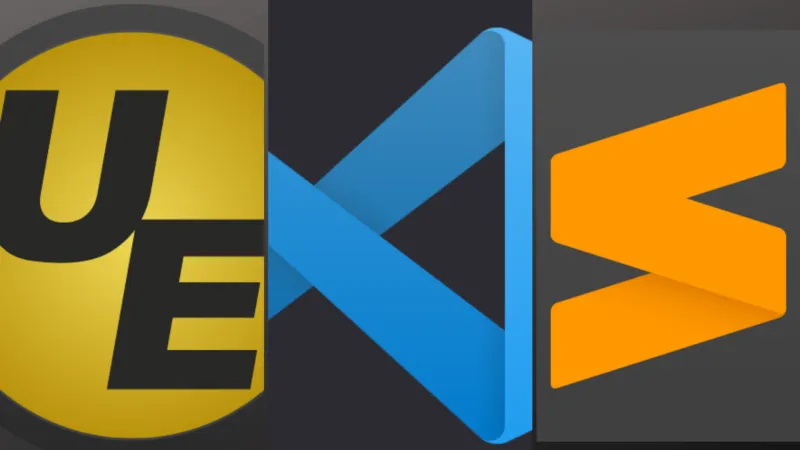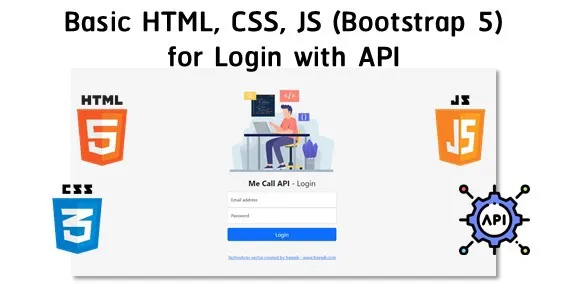
Software development has a lot of abbreviations, and every day new ones appear. In this article, I've compiled some frequently used software development terms. It is better that you know them (if you don't already) if you don't want to feel lost in this world.
Lets's go!
Common Acronyms
-
ES: Abbreviation of ECMAScript. ECMAScript (or ES) is a general-purpose programming language and was initially designed to be a Web scripting language.
-
IDE: Abbreviation of Integrated Development Environment. And IDE is a software application that provides facilities to programmers for software development.
-
GUI: Abbreviation of Graphic User Interface. A GUI or graphical user interface is a form of user interface that allows users to interact with electronic devices through a graphical interface.
-
IIFE: Abbreviation of Immediately invoked function expression. An IIFE is a JavaScript function that runs as soon as it is defined.
-
DOM: Abbreviation of Document Object Model. The Document Object Model or DOM is a programming interface for HTML and XML documents.
-
JSON: Abbreviation of JavaScript Object Notation. It is a data-interchange format.
-
AJAX: Abbreviation of Asynchronous JavaScript And XML. Ajax is a set of techniques using web technologies on the client-side to create asynchronous communication in web applications.
-
AVIF: Abbreviation of AV1 Image File Format. It is a new, highly efficient image compression format.
-
HTML: Abbreviation of HyperText Markup Language. It is the standard markup language for documents designed to be displayed in a web browser.
-
XML: Abbreviation of eXtensible Markup Language. XML is a markup language designed by the World Wide Web Consortium (W3C) to establish a syntax for encoding documents that both machines and humans could read.
-
SEO: Abbreviation of Search Engine Optimization. The SEO Abbreviation is used to define the process of improving the quality and quantity of website traffic by increasing the visibility of a website.
-
UX: Abbreviation of User Experience. UX abbreviation is used to define the design process to create products that provide meaningful and proper experiences to users.
-
JS: Abbreviation of JavaScript. JavaScript is the main programming language of the Web.
-
REGEX: Abbreviation of Regular expression. A REGEX is a regular expression of a sequence of characters that define a search pattern.
-
API Abbreviation of Application programming interface. An API enables two different applications to talk with each other for making some parts of the code available.
-
CDN: Abbreviation of Content delivery network. A CDN is a highly-distributed of servers that help minimize delays in loading web page content by reducing the physical distance between the server and the user.
-
CMS: Abbreviation of Content management system. A CMS is a software application used for creating and maintaining digital content.
-
ERP: Abbreviation of Enterprise resource planning. ERP abbreviation is used to refers to a sort of software that organizations use to manage day-to-day business activities.
-
CRUD: Abbreviation of Create, read, update, and delete. In programming, create, read, edit, and delete are the four essential functions of data manipulation.
-
MVC: Abbreviation of Model, View, and Controller. MVC abbreviation is used to define a software design pattern commonly used for developing user interfaces that distribute the program logic into three elements.
-
UTC: Abbreviation of Coordinated Universal Time. UTC is the primary time standard by which the world regulates clocks and time.
-
EOF: Abbreviation of End of File. The EOF abbreviation is used to indicates the end of a file.
-
FIFO: Abbreviation of First In First Out. FIFO abbreviation is used to indicate that the first item is the first item out in a queue.
-
FTP: Abbreviation of File Transfer Protocol. The FTP abbreviation is used to refers to a protocol widely used to transfer files between computers.
-
SDK: Abbreviation of Software development kit. An SDK is a collection of software development tools in one installable package.
-
JDK: Abbreviation of Java Development Kit. A JDK is an implementation of the Java Platform.
-
JRE: Abbreviation of Java Runtime Environment. It is the part of the JDK that contains and organizes the set of tools and minimum requirements for executing Java applications.
-
JVM: Abbreviation of Java Virtual Machine. The JVM is the virtual machine that allows computers to run Java programs as well as programs written in other languages that are also compiled to Java bytecode.
-
SOAP: Abbreviation of Simple Object Access Protocol. SOAP is used to define a messaging protocol specification for exchanging structured information by web services.
-
SQL: Abbreviation of Structured Query Language. The SQL language is used in programming for managing data in a relational database.
-
JDBC: Abbreviation of Java Database Connectivity. JDBC is an API for the Java language which defines how a client may access a database.
-
ORM: Abbreviation of Object Relational Mapping. An ORM is a programming technique used for converting data between incompatible systems using object-oriented programming languages.
-
ETL: Abbreviation of Extract, Transform, Load. The ETL abbreviation is used to define a type of data integration that refers to the three steps (extract, transform, load) used to mix data from multiple sources.
-
OOP: Abbreviation of Object-oriented programming. OOP is a programming paradigm based on the notion of objects.
-
REST: Abbreviation of Representational state transfer. REST defines a programming architectural style that provides standards for communication between computer systems.
-
CSS: Abbreviation of Cascading Style Sheets. CSS is a style sheet language used for describing the presentation of a document written in HTML.
-
CVS: Abbreviation of Concurrent Versioning System. CVS is a version control system that tracks all changes in a set of files.
-
CSV: Abbreviation of Comma-separated values. A CSV file is a delimited text file that uses a comma to separate values.
-
TDD: Abbreviation of Test-driven development. TDD is a software development process that is based on the repetition of a short development cycle: requirements are turned into specific test cases, and then the code is fixed so that the tests pass.
-
BDD: Abbreviation of Behavior-driven development. BDD is a behavioral driven development strategy, which has evolved from TDD, but it is not a testing technique. BDD defines a common language among all stakeholders and developers.
-
XP: Abbreviation of Extreme Programming. XP is a software development method that organizes people to produce higher-quality software more productively and try to reduce the cost of changes in requirements by having several short development cycles.
-
UAT: Abbreviation of User Acceptance Testing. UAT is the last phase of the software testing process
-
AD: Abbreviation of Active Directory. AD is Microsoft's proprietary directory service.
-
SAAS: Abbreviation of Software as a Service. SaaS is a software solution that is purchased from a cloud service provider on a pay-per-use model.
-
UUID: Abbreviation of Universally unique identifier. A UUID is a 128-bit number used to identify information in computer systems.
-
WYSIWYG: Abbreviation of What you see is what you get. Microsoft Word is a common example to define a WYSIWYG editor. You have a blank page with some format tools, words, images, tables, and so forth. What you see on the screen is exactly what you see when you print the document.
-
SMACSS: Abbreviation of Scalable and Modular Architecture for CSS. SMACSS is a style guide based in five categories (base, layout, module, state, theme).
-
SOLID: Abbreviation of Single responsibility principle, Open-closed principle, Liskov substitution principle, Interface segregation principle, and Dependency inversion principle. SOLID is a mnemonic acronym for five design principles designed to make software designs more flexible, understandable, and maintainable.
-
YAGNI: Abbreviation of You Ain't Gonna Need It. YAGNI is a principle of XP that sets that a programmer should not add functionality until deemed necessary.
-
GNU: This is a recursive acronym for “GNU's Not Unix. GNU is an extensive collection of free software, which gave rise to the family of operating systems popularly known as Linux.
If you are in the software development world, I am sure you know most of these acronyms or will do so in the future.
Further Reading
Improve Remote Development Workflow with Fewer Tools, Single Context



